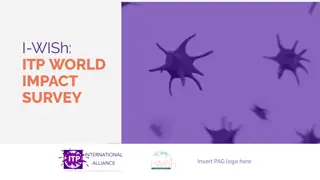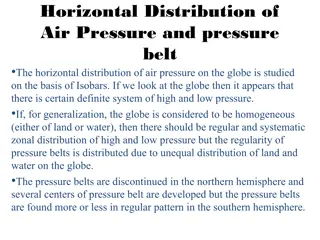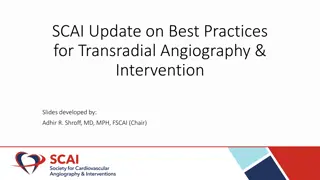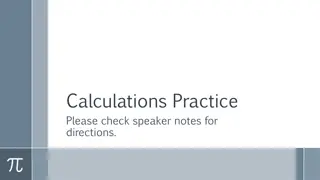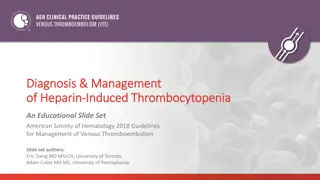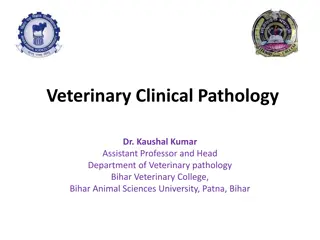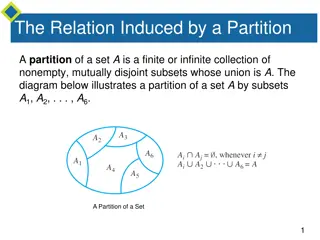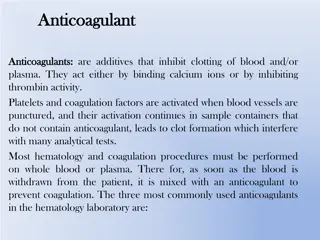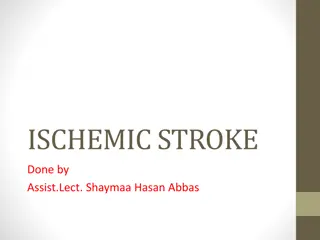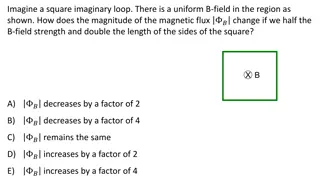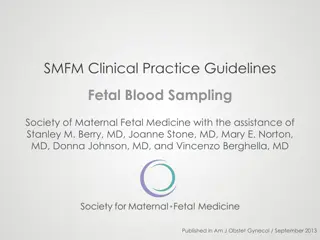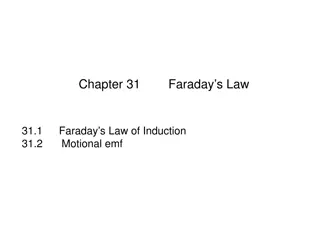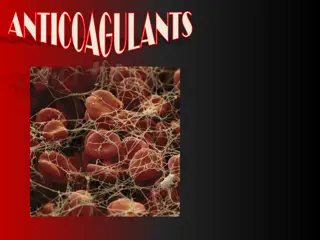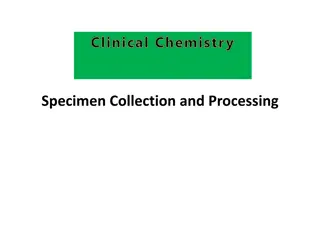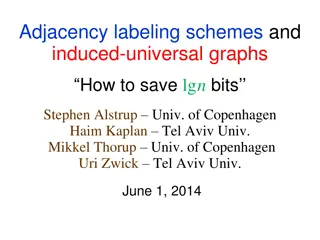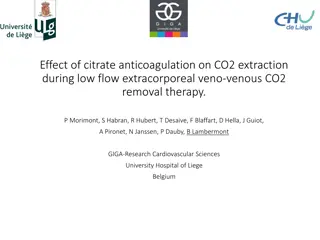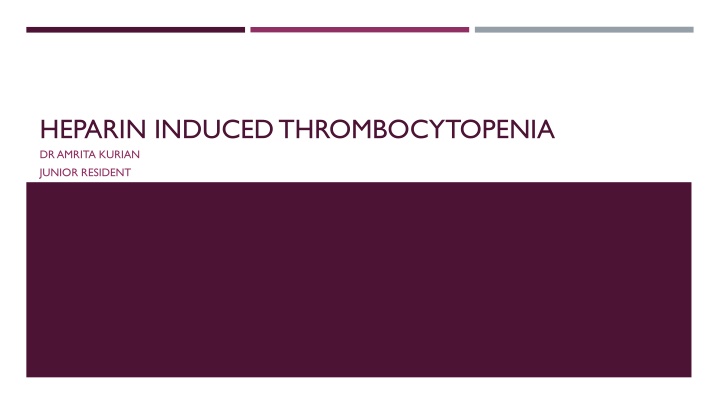
Heparin-Induced Thrombocytopenia and Its Complications
Heparin-induced thrombocytopenia (HIT) is an immune-mediated adverse drug reaction characterized by platelet activation in the presence of heparin. Despite its low incidence, HIT can lead to severe thromboembolic complications. This article explores HIT, its risk factors, incidence rates, and associated mortality, shedding light on the complexities of this condition.
Download Presentation

Please find below an Image/Link to download the presentation.
The content on the website is provided AS IS for your information and personal use only. It may not be sold, licensed, or shared on other websites without obtaining consent from the author. If you encounter any issues during the download, it is possible that the publisher has removed the file from their server.
You are allowed to download the files provided on this website for personal or commercial use, subject to the condition that they are used lawfully. All files are the property of their respective owners.
The content on the website is provided AS IS for your information and personal use only. It may not be sold, licensed, or shared on other websites without obtaining consent from the author.
E N D
Presentation Transcript
HEPARIN INDUCED THROMBOCYTOPENIA DR AMRITA KURIAN JUNIOR RESIDENT
SOURCES HEPARIN INDUCED THROMBOCYTOPENIA Diala Nicolas, Samar Nicolas, Alexander Hodgens, Online publication :NCBI Stat Pearls, 2022, October 3 HEPARIN INDUCED THROMBOCYTOPENIA : A REVIEW OF NEW CONCEPTS IN PATHOGENESIS, DIAGNOSIS AND MANAGEMENT Matteo Marchetti, Maxime G Zermatten , Lorenzo Alberio et al in Journal Of Clinical Medicine 2021, Feb;10(4) HEPARIN INDUCED THROMBOCYTOPENIA Gowthami M Arepally, in BLOOD by the American Society of Hematology, 2017
INTRODUCTION HEPARIN Potentiates the action of antithrombin III and thereby inactivates Factors 2,9,10,11 and 12 as well as plasmin. Unique pharmacologic properties rapid onset of action ability to inhibit multiple coagulant proteins ease of monitoring reversibility
At the therapeutic forefront for a number of indications where alternative therapies are currently lacking (cardiac surgery), unsuitable (mechanical valves), or untested (cancer associated thrombosis and antiphospholipid antibody syndrome).
Heparin induced thrombocytopenia (HIT) : heparins most clinically relevant non hemorrhagic complication. A potentially devastating immune mediated adverse drug reaction caused by the emergence of antibodies that activate platelets in the presence of heparin. Instead of bleeding, HIT is strongly associated with thromboembolic complications involving both the arterial and venous systems.
The immune reaction is common (8% to 50%), but only 0.5 to 1% on UFH will develop HIT Incidence even lower with LMWH : 0.1 to 0.5% Incidence greater with bovine than porcine heparin Major surgery (cardiac > orthopaedic > vascular) higher risk than minor surgery or medical therapy Rare in obstetric patients Females > Males
50% of HIT cases develop HITT ( Heparin Induced Thrombocytopenia with Thrombosis) MORTALITY : upto 30% WHY DOESN T ALL PATIENTS WITH HIT ANTIBODY DEVELOP HIT? Not completely understood, but association between polymorphisms of Fc receptor and thromboembolic complications in HIT has been observed
TYPES OF HIT TYPE 1 HIT : HEPARIN ASSOCIATED THROMBOCYTOPENIA Non immune mediated reaction More common, mild As early as day 1 of therapy Platelet counts spontaneously normalize even if heparin is continued
TYPE 2 HIT Immune, antibody mediated reaction Occurs 5 to 14 days of receiving heparin, within I day if recent exposure to heparin ie in the last 100 days. Hypercoagulable state, life threatening complications
PATHOPHYSIOLOGY 1. ANTIGEN FORMATION : PLATELET FACTOR 4- HEPARIN COMPLEXES (PF4/H) The HIT antigen is situated on the platelet factor 4 (PF4), a chemokine within platelet -granules. PF4 not immunogenic in its primary form. Conformational changes occur in PF4 secondary to binding with negatively charged molecules - heparin and other glycosaminoglycans (GAGs); BECOMES IMMUNOGENIC Affinity of PF4: heparin > heparan sulfate > dermatan sulfate > chondroitin sulfate
The size and the charge of the complexes play a central role in pathogenicity. PF4 molecules (positively charged) assemble with heparin chains(negatively charged) - multimolecular ultralarge Heparin/PF4 complexes (ULCs) Maximal amount of ULCs formed at equimolar PF4/heparin ratio A net positive charge facilitates the interaction with immune cells Therefore, highest immunogenicity when PF4 is in excess and at a molar PF4/heparin ratio of 20:1
Heparin chains with at least 12 saccharides are necessary to form ULCs Compared to UFH (45 saccharides) , far fewer ULCs are formed with LMWH(15 saccharide units) , and none with fondaparinux ( 5 saccharides)
2. ANTI PF4/H ANTIBODY SYNTHESIS ULCs activate complement, deposition of C3/C4 on the complexes. Facilitates binding to CD21 on B cells, B cell activation and antigen transport to secondary lymphoid follicles Culminates in an adaptive humoral immune response and anti-PF4/H antibodies production
3 PLATELET ACTIVATION In presence of PF4, increasing heparin initially leads to an increasing antigen-complex size - ULCs HIT antibodies then bind to these ULCs The antigen antibody binds on the platelet surface via Fc receptor Induces platelet activation : platelet degranulation and aggregation
Degranulation releases PF4 : increase in PF4 concentration - further antigen-complex formation platelet-derived procoagulant microparticles : enhance thrombin generation. In presence of excess PF4, further cells, including monocytes, endothelial cells, and neutrophils are recruited.
ROLE OF OTHER CELLS BEYOND PLATELETS MONOCYTES : Excess PF4 bind to GAGs in their glycocalyx Activated monocytes (a) secrete IL 8 (b) increased expression of Tissue Factor This procoagulant activity culminates in thrombin generation
ENDOTHELIAL CELLS : HIT antibodies bind to PF4 on endothelial cells (pre requisite: platelet activation and degranulation) Endothelial injury release of von Willebrand factor (platelet adhesion) and thrombomodulin (decreases the anticoagulant potential) Endothelial activation: expression of tissue factor
NEUTROPHILS: Activated via P-selectin on platelets and immune complexes formed by binding to chondroitin sulfate Induces formation of Neutrophil Extracellular Traps that participate in hypercoagulability
Reasons for thrombocytopenia Macrophages consume the IgG coated platelets and the reticuloendothelial system removes them As platelets become activated , they aggregate thrombus formation and platelet counts drop
HIT WITHOUT HEPARIN SPONTANEOUS OR AUTOIMMUNE HIT
CLINICAL FEATURES In heparin-naive individuals, PF4/heparin antibodies become detectable at a median of 4 days from start of heparin therapy. Clinical manifestations of thrombocytopenia and/or thrombosis develop 5 to 14 days after initial heparin therapy In patients with recent heparin exposure (within 100 days), thrombocytopenia occurs precipitously within 24 hours of drug re exposure because of circulating anti-PF4/heparin antibodies.
THROMBOCYTOPENIA Occurs in 95% Manifest either as an absolute drop in platelet count (less than 1,50,000/L) or a relative decline of 50% from baseline platelet counts. Nadir 20,000 Patients with isolated thrombocytopenia (isolated HIT) remain at high risk for subsequent thrombosis (20% to 50%) from circulating antibodies
THROMBOSIS Occur concurrently with thrombocytopenia Venous thromboses predominate, particularly at sites of vascular injury from catheters. Atypical presentations : bilateral adrenal hemorrhage, venous limb gangrene, and skin necrosis should prompt diagnostic consideration of HIT.
Not known why some seropositive patients remain asymptomatic while others progress to severe disease. Clinical studies indicate that certain serologic features, such as IgG isotype high antibody levels marked thrombocytopenia (> 90% decline from baseline counts) are associated with thrombotic risk
COURSE Platelets start to rise within 2 to 3 days of stopping heparin and returns to normal within 7 to 10 days. Even with platelet recovery, patients are at risk for thrombosis for 4 to 6 weeks after diagnosis. It takes another 2 to 3 months for the antibodies to disappear (3 months for immunoassays) Patients who are re-exposed to the drug after many months or years don t often manifest anamnestic responses and seroconversion risk appears similar to de novo heparin.
CLINICAL SCORING SYSTEMS : 4 T SCORE TO ESTIMATE THE PROBABILITY OF HIT. Score of 0-3 : rules out HIT Score of 4-5 : intermediate probability Score of 6-8 : High probability of HIT (around 50%)
HEP (HIT Expert Probability Score) : More recent, higher specificity among ICU patients Not yet recommended.
LABORATORY WORK UP In those with intermediate to high probability of HIT ANTIGENIC ASSAYS Highly sensitive (80 to 100%) and excellent negative predictive value Low specificity Easier to perform ; ELISA based Aims to detect Anti PF4-heparin Antibody in patient s serum or plasma Typically IgG specific (95% of PF4/H antibodies are IgG)
FUNCTIONAL ASSAYS (ACTIVATION ASSAYS) Gold standard But time consuming and not available in all hospitals Their use is currently only recommended only among patients with intermediate and/or high clinical suspicion and a positive Immunoassay
Sample : patients serum having H/PF4 Ab + washed platelets Tests the ability of H/PF4 Ab to activate platelets in the presence of exogenous heparin We measure Serotonin release ( >20%) from activated platelets ATP release HIPA (heparin induced platelet activation)
DIFFERENTIAL DIAGNOSIS TYPE I HIT DISSEMINATED INTRAVASCULAR COAGULATION BACTERIAL SEPSIS THROMBOTIC THROMBOCYTOPENIC PURPURA HEMOLYTIC UREMIC SYNDROME IMMUNE THROMBOCYTOPENIA DRUG INDUCED THROMBOCYTOPENIA MYELOSUPPRESION CHRONIC LIVER DISEASE HYPERSPLENISM
MONITORING OF PLATELET COUNT The American College of Chest Physicians, in collaboration with the College of American Pathologists A baseline platelet count before initiating heparin treatment in all patients In higher risk patients, eg: those receiving unfractionated heparin at therapeutic doses, the platelet count to be checked at least every other day from day 4 to 14 of treatment (or until heparin is stopped, whichever is sooner). In lower risk surgical, medical and obstetric patients, monitoring should be at least on every second to fourth day between days 4 and 14 while on heparin
TREATMENT CORNERSTONES Immediate cessation of heparin Send blood samples for laboratory confirmation Lower limb venous doppler for DVT Avoid platelet transfusions - exacerbate the hypercoagulable state. However, if the patient develops bleeding or is undergoing major surgical intervention, therapeutic platelet transfusion can be considered.
ALTERNATIVE ANTICOAGULATION Direct parenteral thrombin inhibitors: argatroban or bivalirudin Indirect parenteral factor Xa inhibitors: danaparoid or fondaparinux Newer oral anticoagulants : rivaroxaban, apixaban or dabigatran (but the data on their use is very limited) Overlap with Vit K antagonist to be initiated only after platelet counts are 1.5 lakhs for 2 consecutive days
DOSAGES FONDAPARINUX < 50 kg : 5mg S/C OD 50- 100 kg : 7.5mg S/C OD > 100 kg : 10mg S/C OD
ARGATROBAN Initial dose: 2mcg/kg/min, continuous IV infusion Maintenance: Not to exceed 10mcg/kg/min Measure APTT after 2 hours and adjust the dose till APTT is 1.5-3 times the initial baseline value (<100s) While converting to warfarin, loading dose of warfarin not used due to their combined effect on the INR Patients receiving 2mcg/kg/min : Argatroban can be stopped when INR >4 following combined therapy Patients on 2mcg/kg/min : reduce the dose of argatroban to 2mcg/kg/min and measure INR 4 to 6 hours after dose reduction; if >4, stop the drug
BIVALIRUDIN Initial dose : 0.2 mg/kg/hour Adjust the dose to achieve an APTT of 1.5- 2.5 times the baseline Warfarin may be overlapped with bivalirudin for minimum of 5 days until INR is within the target range
Duration of therapeutic anticoagulation: HIT alone : 1 month HITT: 3 6 months
SECOND LINE TREATMENTS Therapeutic plasmapheresis (limited experience) Intravenous immunoglobulin
SPECIAL SCENARIOS MANAGEMENT OF HIT DURING CARDIAC OR VASCULAR SURGERY Delay the surgery if possible Alternate anticoagulant Avoid heparin in patients with a past history of HIT: risk of anamnestic response
If emergency surgery and heparin administration is absolutely necessary In patients with HIT antibodies or high 4T score : IV Ig or plasma exchange prior to heparinisation In patients without HIT antibodies: limit heparin exposure to the day of surgery only, thereafter a non heparin agent Co administer epoprostenol with heparin intraoperatively : prevents platelet activation
HIT IN PATIENTS REQUIRING HEMODIALYSIS No heparin method ( 200ml isotonic saline every hour for the entire session of HD) Heparinised solution rinse : A heparinised solution is flushed through the dialysis circuit which is then rinsed out with isotonic saline prior to connecting the patient to the circuit

